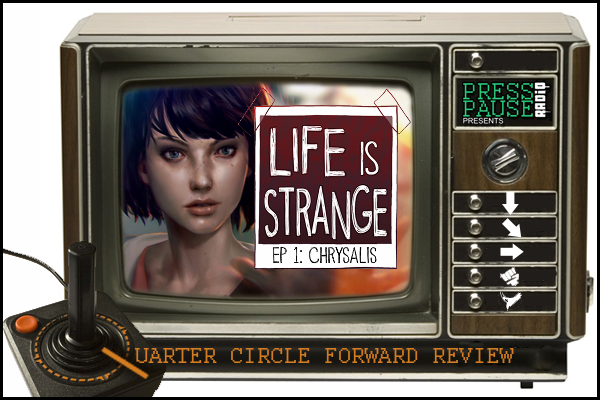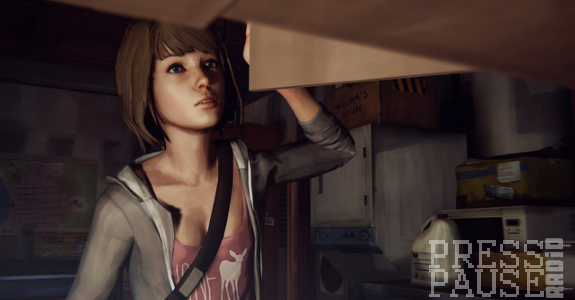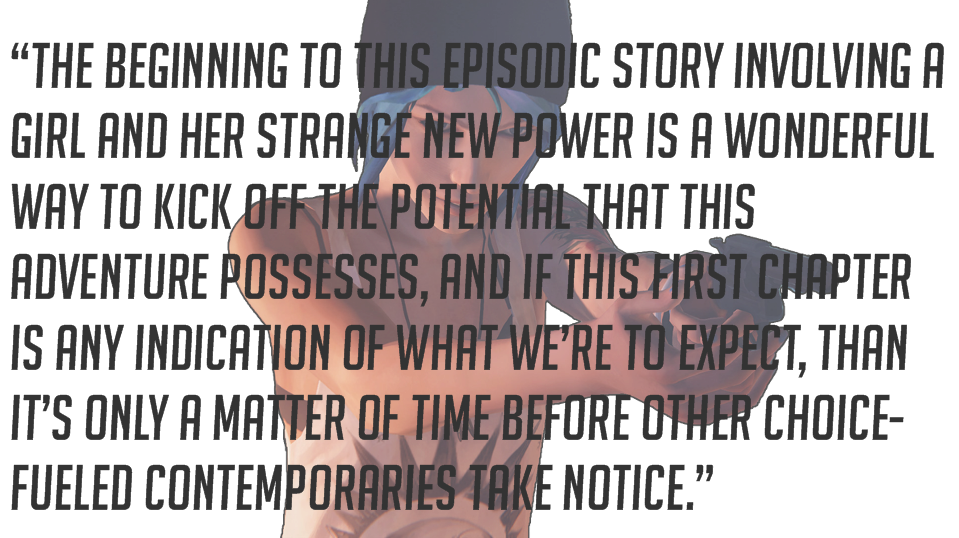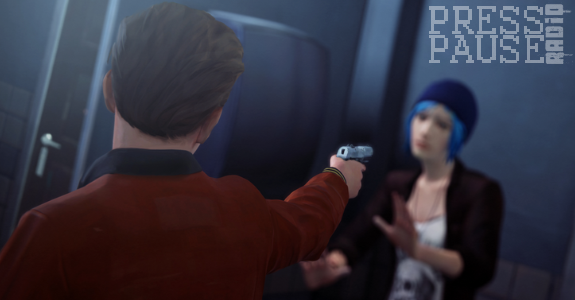QCF: Life is Strange: Episode 1: Chrysalis

 eenage Adolescence is that weird phase that will most likely stick with us in life more than any other period of our existence, the one identity that everyone is most likely to blur in and out of in their adult life, for better, or for worse. Now imagine having the power to rewind back the flow of space and time to cater to your every whim and desire, or a chance to divert back the makings of a teenage crisis that you could never possibly stomach living down—that’s a promising proposition right?
eenage Adolescence is that weird phase that will most likely stick with us in life more than any other period of our existence, the one identity that everyone is most likely to blur in and out of in their adult life, for better, or for worse. Now imagine having the power to rewind back the flow of space and time to cater to your every whim and desire, or a chance to divert back the makings of a teenage crisis that you could never possibly stomach living down—that’s a promising proposition right?
Well, it’s never really ever that simple, and Dontnod Entertainment’s Life is Strange offers a unique twist on the foundation of choice-driven gameplay that emphasizes that one decision isn’t always easier than the other, and the result creates for engaging roller-coaster of discovery and tragedy.
It all starts with a photography student in her college years, Max Caldwell, returning back to her hometown of Arcadia Bay, as she experiences the disorienting juxtaposition of familiarity and uncertainty in this big life change; as cliché as it may appear, the connection is successful thanks to the genuine portrayal of characters and their disposition to everything going on. Despite the implicit science fiction tones of time travel and the surrealistic phenomena it causes, the setting of Life is Strange is firmly planted in the roots of western suburbia that almost anyone can relate to.

As a series of events gradually unfolds, Max finds herself imbued with the power of commanding time, and like any sensible teenager who suddenly discovers that they can shift any chronological happening to their favor, she uses it as crutch to overcome her social anxiety.
The recognizable setup of choice-driven interactions found in Life is Strange is now boosted with the leverage of being able replay them all back to their beginning while retaining the knowledge of the information and direction of where it’s going, changing the course of the conversation and subsequent choice-trees in the process. The result is unique in that gives players all of the sides to the discourse and doesn’t ever force them into wondering what would’ve been, and while there’s a charm in riding on a decision without knowing the outcome of the other, the setup is just ambiguous enough on both ends to keep everyone on their toes at all times.
Though that’s not to say that the ability to manipulate the flow of time plays second fiddle to everything going on, it isn’t the focus of attention so much as a plot device; one that acts as a supplement to all of the details and exegesis to plot, while retaining all of the mysticism and intrigue involved with temporal control. In addition to changing up the dynamic of narrative and that judgement calls that move it—time travel affects all of the other mechanics of the game, pushing gameplay conventions out the traditional comfort zone of progression by heavily encouraging a trial-and-error approach that’s bolstered by the safety-net of rewinding it all back when things just don’t go your way.

Reaching for a pile of documents that’s precariously hanging off of the edge of a raised alcove can lead to them falling into a puddle of liquid that would destroy them without you ever knowing, but when dialing back the chain of events from the beginning, the new intel will leave you all the wiser to find recover the documents. This is just one of the many scenarios that revolve around causal nexus of puzzle solving within Life is Strange that refreshes the conventional filler content between the major plot points of the game’s moving story, subtlety building the world and an incentive to take notice to what’s happening.
If there’s one critical shortcoming that holds Life is Strange back, it’s the shoddy animation and visual performance that disrupts any momentum it builds on significantly. While it doesn’t affect gameplay directly, it affects the immersion of the experience, especially when a narrative-heavy game that hinges on cinematic presentation and ambience tends glitch out with graphical hang-ups that’re bad enough to take anyone out of the buildup it’s trying to create.

The Soundtrack on the other hand is amazing, as it’s a meticulous selection of tracks from choice artists and groups that wonderfully the culture and scene of Max’s world. SparkleHorse, Mogwai, Amanda Palmer, and more provide a sound that resonates a number of aspects and themes that are crucial to the authentic and atmosphere to the world that Life is Strange is try to portray.
The beginning to this episodic story involving a girl and her strange new power is a wonderful way to kick off the potential that this adventure possesses, and if this first chapter is any indication of what we’re to expect, than it’s only a matter of time before other choice-fueled contemporaries take notice.
Life is Strange is an investment, but it’s also one that’s strongly positioned towards delivering a big payoff.






 GeorgieBoysAXE
GeorgieBoysAXE




